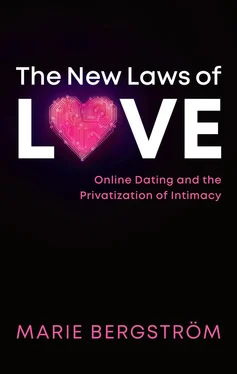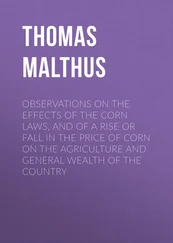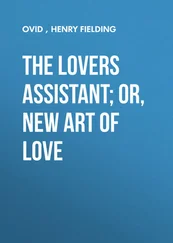First, I use several large-scale scientific surveys in order to measure and characterize the use of online dating. Surveys on the topic are scarce and prompt me to focus on three countries where data are available and fairly recent: the United States, Germany, and France. The data come from questionnaire surveys, with representative population samples, on couple formation, sexual health, or digital technology (see Sources, pp. x–xi). Analyzing this type of macro data is essential for establishing usage rate, the characteristics of users, and the type of relationships formed online.
Alongside these traditional surveys, I also gathered “big data” from several online dating platforms. This was made possible by a scientific collaboration with the company Meetic Group, owner of several dating services such as DatingDirect, OurTime, French Meetic, Dutch Lexa, German LoveScout24 and Neu. Meetic Group is also the owner of the European activities of Match, which has a large user base in many countries. Access to anonymized and censured data from these seven international platforms permitted me to observe global trends in self-presentation and contact behavior. My analysis was carried out in strict observance of user privacy. This means that I was never able to identify users, track their usage, or access any of their communications. Only metadata were analyzed, as I did not have access to actual profiles or messages. But these data are precious for understanding how users of different backgrounds (age, gender, education, country, region, etc.) use the platforms and what groups interact with whom.
A qualitative study complements this quantitative approach and is based on interviews with 82 French users of dating sites and applications, aged between 18 and 68 years and coming from diverse social backgrounds. Almost all respondents identified as heterosexual; two identified as bisexual. I conducted the majority of the interviews myself; some were conducted by sociologist Rébecca Lévy-Guillain, who participated in the last stage of this project. All interviews were recorded, transcribed, and subjected to an in-depth analysis. The interviews had a biographical character in order to permit me to follow the trajectories of the interviewees. Thus I was able not only to situate the moments at which my respondents used online dating, but also to compare their online experiences with those that took place “offline,” in person. The following chapters present many excerpts from these interviews. Names and certain information have been changed in order to protect the anonymity of the interviewees. Readers should be warned that all my respondents lived in France, and experience can of course differ in other countries.
In addition to these interviews with users, I also conducted a series of interviews with founders of dating sites and apps, mainly French but also North American. These interviews aimed to help me understand how founders conceive of their own dating platforms and what visions of the industry they entertain. Because many of them were careful to protect the image of their company and I didn’t want them to censure their speech for fear of bad press, their names have been changed and the names of their platforms are not revealed.
The book is divided into seven chapters, each focusing on a specific topic related to online dating and the transformation of heterosexual relationships. The first part of the book looks at the process of privatization, which is approached from different vantage points: a historical perspective, an analysis of the dating economy, an explanation of the success of online dating, and an analysis of the changes that this form of dating brings about in terms of sex and love.
Chapter 1opens up the archives, looking for the origins of online dating. Matching services have a long history in both Europe and the United States. The first matrimonial agencies and personal ads appeared in the nineteenth century, and forms of “computer dating” were experienced in the 1950s; the first network of matchmaking systems followed a few decades later. This genealogy establishes a strong filiation between earlier services and today’s digital platforms. It also reveals a common criticism that targeted them from the start: as early as in the nineteenth century, matchmaking services were accused of corrupting intimate relationships by introducing economic standards. The commodification of intimacy appears as a long-running fear of commercial intermediaries rather than as a feature of late capitalism.
Chapter 2pursues this historical analysis by looking at the emergence of today’s online dating market. Drawing on interviews with the founders of a series of dating sites and apps, it shows the social and professional norms that inform these platforms and govern their creation. Whereas the features of dating platforms are commonly scrutinized for what they supposedly says about modern love, this chapter shows that the products primarily reflect economic concerns. The making of dating platforms obeys contemporary market phenomena, namely isomorphism, segmentation, and stereotyping.
Unlike older forms of mediated dating that never made it into the mainstream, online dating has become a common practice and an important meeting venue in the western world. However, the phenomenon has also been exaggerated, both in the press and by scientific scholars. Using national surveys from different countries, chapter 3gives an overview of the number of users and the proportion of couples that meet online. It also provides a new explanation for the popularity of online dating – namely that online dating owes its success to the separation it operates between the sexual and the social sphere. This feature is fundamental to why and how people use online dating, although the reasons differ between young adults, people in their thirties, and separated individuals in mid-life.
Online dating is primarily casual dating. This common perception, largely conveyed by the media, is also a scientific fact. Chapter 4shows that relationships initiated online rapidly become sexual and are often short-term; but it also challenges the common interpretations of this trend. Where authors often see a radical shift in norms, this book insists on a change in context . The sexual nature of online dating must, once again, be understood in the light of privatization; individuals more easily engage with and disengage from partners with whom they do not share a social setting. What is more, online dating does not hinder couple formation, nor does it imply some commitment phobia. In fact, the couple norm is as strong as ever, but the ways of committing are changing.
The second part of book looks at the inequalities in dating; we are not all equal before the laws of love. Online dating has not changed this, but it lays bare the discriminations, prejudices, and injustices that characterize the intimate sphere.
Chapter 5investigates the mechanisms of assortative matching in online dating. The hyper-standardized platforms do not obstruct social differences in user behavior, nor do they prevent online relations from being homogamous. Users tend to interact with people from a social milieu similar to their own. This social selection is not due only to algorithms or predefined preference; it is rather the result of class dispositions and cultural prerequisites. Precisely because online dating takes away some of the most formal obstacles to social diversity, it reveals the strength and the modus operandi of today’s social hierarchies.
Although specifically designed to match people as partners, dating platforms have their winners and losers. Not everyone manages to initiate contacts, meet partners, or form a relationship. These inequalities are not only individual but follow strong regularities of gender and age. Chapter 6shows that young men are often rejected by their female peers who seek contact with more mature men. At older ages, this sexual disqualification turns against female users who, after a separation, show interest in men of their own age, who then turn to younger women. Dating platforms reveal this machinery of matching and those excluded from the process.
Читать дальше












